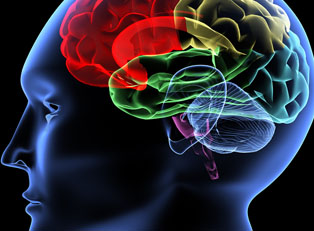There is not one test alone that determines whether a patient has cerebral palsy (CP), a neurological condition that affects a person’s motor control, posture, and development. The process of diagnosing CP includes looking at a patient’s prenatal and medical histories, monitoring growth and development, and the process of elimination. Other conditions that may cause similar signs and symptoms must be ruled out. This article reviews some of the diagnostic tools your doctors may use to determine whether your child has cerebral palsy.
A diagnosis of cerebral palsy is often a collaborative effort between a child’s caregivers, who may be the first to notice signs of developmental delay, and the family pediatrician, who considers prenatal and family histories, risk factors, and the child’s growth and development milestone achievements. Your child’s doctor may order some tests as well as consult with or refer your child to a pediatric neurologist, a physician who specializes in conditions affecting the brain during childhood.
According to the National Institute of Neurological Disorders and Stroke, most children with cerebral palsy are diagnosed during the first two years of life. But when symptoms are mild, a sure diagnosis may not be reached until age four or five. The following tests may help confirm a diagnosis of cerebral palsy.
Placenta Examination
Warning signs may cause your physician to examine the placenta once your baby is born. The placenta can show signs of blood clotting or lesions that may have caused your baby to be oxygen-deprived for a period of time.
Laboratory tests
Your doctor may want to exclude any possible metabolic disorders, ordering blood or urine tests that analyze the metabolic components in them. Genetic testing may also be explored by your physician.
Neuroimaging
Images of your child’s brain can provide useful information about its structure and blood supply. They are painless tests that can detect the presence of lesions and blood clots. The most effective brain scan tests include:
- Computed tomography scan (CT): This test uses X-rays to create cross-sectional images of the brain and is useful for detecting structural abnormalities and areas of the brain that are damaged.
- Magnetic resonance imaging (MRI): This tests creates a 3D image of the brain using a magnetic field and radio waves. Because it provides an all-inclusive view of the brain, doctors can see the brain’s tissue and structures as well as signs of inflammation in the most detailed way. Consequently, it may be used more often than CT.
Electroencepholography (EEG)
According to the Centers for Disease Control and Prevention (CDC), as many as 41% of children with cerebral palsy also have epilepsy. Your doctor may order an EEG, a test that monitors and records the brain’s electrical activity.
Lumbar puncture
Some types of cerebral palsy, such as ataxic-spastic gait or dyskinesias, can be caused by abnormalities in the cerebral spinal fluid. In these cases, a lumbar puncture might be ordered. During this test, a needle is inserted between the lower vertebrae of the spine and fluid is aspirated for analysis.
Additional Conditions and Testing
Some other conditions that often accompany CP and may require diagnostic testing include:
- spinal deformities
- intellectual disabilities
- vision, hearing, and language impairments
- swallowing, drooling, and speech impairments
- incontinence



